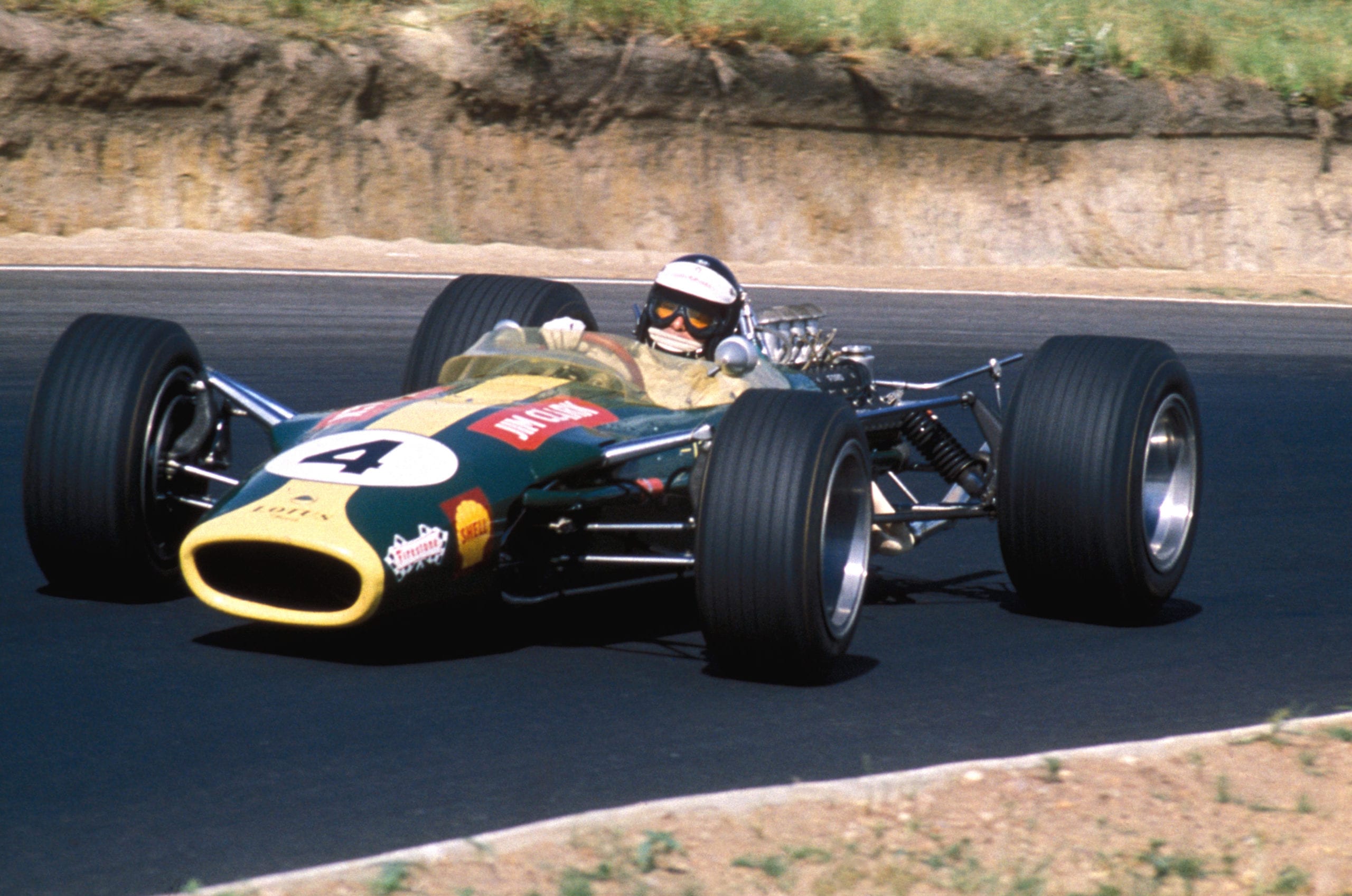
Lotus Grand Prix Team
From 1961 onwards Jim was a fixture in the Lotus Grand Prix team under team owner Colin Chapman and by the end of his first season he was their main driver. He won the non -championship race at Pau that year and achieved 2 further podiums in Zandvoort and Reims finishing 3rd on both occasions. In 1962, Jim so nearly tasted championship success. Chapman introduced the Lotus 25 with its revolutionary fully stressed monocoque chassis, the very first in Formula 1. He won three Grand Prix – the Belgium, British and French and finished second in the Championship to Graham Hill.
In 1963, Clark and Lotus became a dominant force, winning an incredible 7 out of the 10 Grand Prix to take the championship with 3 races remaining in the revolutionary Lotus 25. Chapman had found the perfect driver to compliment his skills as a designer and Jim became the youngest ever World Champion aged 27. The seasons success included a 2nd in the famous Indianapolis 500, on 30th May, when Jim narrowly missed out to Parnelli Jones in a controversial race. Jim was fast becoming a sporting star for Scotland across the UK, Europe and America. He was admired not just for his natural ability as a racing driver, but also his sportsmanship, good humour and humility.
1964 was a difficult season. He won 3 races but had a string of 3 consecutive retirements to add to an earlier one in France, significantly hampering his chances of retaining The World Championship. His luck was out in America as well. Having secured pole position in the Indy 500 in a bid to finish one better than in 1963 and win. He finished 24th due to a tyre failure resulting in suspension damage. However, Jim did win the British Touring Car Championship in the Lotus Cortina and the British and French Formula 2 Championships.
1965 was his most successful season. He secured the Formula One World Championship for the second time by winning 6 out of the 9 races he competed in, having missed Monaco to return again to Indianapolis. He won the ‘’500’’ emphatically, leading 190 out of the 200 laps in the ground breaking Lotus 38. It was the first rear engined race car to win the Indy 500 powered by a four-cam Ford V8 and designed with “offset” suspension, the car body being located asymmetrically between the wheels. Furthermore, he won the first of his 3 Tasman Series championships and the Formula 2 Championship. Jim remains the only racing driver in history to win both the Formula 1 World Championships and Indy 500 in the same year. It is considered, by many, the greatest ever season by any driver in the history of motorsport. Jim was now one of the most popular sporting personalities in the world with celebrity status akin to a Hollywood film star.
Due to lack of reliability, luck and car development; Jim struggled through the 1966 Formula 1 season with a single victory in the US Grand Prix in a Lotus 43 BRM. He qualified second again at the Indy 500 and held grid position to claim another runners-up spot. In his second entry into the Tasman Series he finished the year third after 3 retirements in the first 4 races. Perhaps the high point of his racing year was the RAC Rally, where he took three stage wins, was second-fastest on seven more occasions, third-fastest on four stages and fourth-fastest on five stages. He eventually rolled his Lotus Cortina on Stage 45 and therefore did not finish. However as a one off performance, it was amazing, since back in 1966 rallying was so far removed from circuit racing that it required a totally different driving skill set from a competitor.
1967 saw the introduction of the Lotus 49 in which he won, on its debut at the Dutch Grand Prix. However, his 4 victories that year did not outweigh his 5 retirements causing him to finish the season in third place. He won the Tasman Series Championship with five victories and three second places in the 8 races, but qualified 16th and finished 31st in his final Indy 500 appearance, in the now aging Lotus 38.
Jim’s final season in 1968 began with his third Tasman Series Championship, to add to his victory in the South African Grand Prix on 1st January. Jim Clark died on the 7th of April 1968 at The Hockenheimring in Germany in a Formula 2 race when his car left the track on lap 4.
